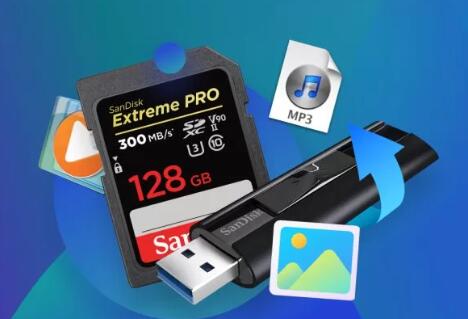I. Files from an SD card
Losing important files from an SD card can be a frustrating experience. SD cards are widely used in various devices such as digital cameras, smartphones, tablets, and portable media players to store photos, videos, music, documents, and other types of data. There are many reasons why files on an SD card can become lost. It could be due to accidental deletion, formatting of the card, file system corruption, virus or malware attacks, physical damage to the card (though less likely for just file loss), or improper ejection of the card from a device. Fortunately, in many cases, it’s possible to retrieve these lost files.
II. Reasons for File Loss on an SD Card
Accidental Deletion
This is one of the most common causes. Users might accidentally select and delete files while trying to manage the content on the SD card. For example, in a digital camera, when quickly browsing through photos to delete unwanted ones, a user might accidentally delete the wrong pictures. In a smartphone, a similar situation can occur when cleaning up storage space and deleting files from the SD card storage.

Formatting
Formatting an SD card erases all the data on it. This can happen accidentally. For instance, a user might select the wrong option in a device’s storage settings and format the SD card instead of formatting another storage medium. Sometimes, formatting is also done thinking it will fix a problem with the card, such as when the card is not being recognized properly.
File System Corruption
File system corruption can occur due to various reasons. Sudden power loss while the card is being written to or read from is a common factor. For example, if a digital camera’s battery dies while saving a photo to the SD card, it can lead to a corrupted file system. Another cause could be improper handling of the card, such as ejecting it from a device while it’s still in use.
Virus and Malware Attacks
SD cards can become infected with viruses or malware if they are inserted into infected devices. These malicious programs can delete or corrupt files. For example, a computer infected with ransomware might encrypt or delete the files on an SD card when it’s connected to the computer.
III. Precautions Before Trying to Retrieve Files
Stop Using the SD Card Immediately
Once you realize that files are lost, it’s crucial to stop using the SD card. Any new data written to the card can overwrite the lost files. For example, if you continue to take photos on a digital camera with the SD card that has lost files, the new photos might overwrite the sectors where the lost files are stored.
Backup the SD Card (if possible)
If the SD card is still recognized by a device, it’s a good idea to make a backup copy of it. This can be done by using disk – cloning software or simply copying the entire contents of the card to another storage device. However, make sure that the backup process doesn’t modify the original SD card in a way that could lead to further data loss.
Check for Physical Damage
Inspect the SD card for any signs of physical damage such as cracks, bent pins, or water damage. If there is physical damage, it’s important to handle the card carefully. In some cases, physical damage can make it more difficult or even impossible to retrieve the files.
IV. Methods of Retrieving Lost Files
Using File Recovery Software
Panda Assistant caters to a wide range of scenarios, from recovering documents, photos, and videos to handling complex cases such as formatted drives and corrupted file systems. With its robust algorithms and intuitive interface, this software ensures that data recovery is accessible even to those without technical expertise.
Key Features of Panda Assistant
Comprehensive Data Recovery: Panda Assistant supports multiple file formats and storage devices, including hard drives, SSDs, USB drives, SD cards, and more. No matter where your data was stored, Panda Assistant offers a reliable way to retrieve it.
User-Friendly Interface: Designed with simplicity in mind, the software guides users through each step, making recovery quick and hassle-free.
Advanced Scanning Options: The tool provides both quick and deep scan modes, ensuring the highest chance of recovering lost data. While the quick scan identifies recently deleted files, the deep scan dives deeper into storage sectors for more complex recoveries.
Preview Feature: Before restoring files, users can preview them to ensure they’re selecting the correct data. This saves time and avoids unnecessary recovery attempts.
Compatibility and Flexibility: Panda Assistant works seamlessly with both Windows and macOS systems, making it a versatile choice for users across platforms.
V. Special Considerations for Different Types of Files
Photos and Videos
Metadata: Many photo and video files have metadata associated with them. Metadata can include information such as the date and time the file was created, the device used to capture it, and the location (if the device has GPS capabilities). When recovering photo and video files, it’s important to look for software that can also recover and preserve this metadata.
File Formats: Different photo and video file formats have different characteristics. For example, RAW photo formats contain more data than JPEG formats and might require specific software to recover properly. Similarly, high – definition video formats like 4K and 8K videos might need more advanced recovery techniques due to their large file sizes and complex encoding.
Documents
File Encryption: If the lost documents were encrypted, you need to have the encryption key to access and recover them properly. Some file recovery software might not be able to handle encrypted files. In such cases, you might need to use the software or tools that were used to encrypt the files in the first place.
Document Formats: Different document formats such as Word documents (.docx), PDF files, and text files (.txt) have different structures. Recovery software needs to understand these structures to recover the files accurately. For example, a PDF file has a specific format that includes information about the text, images, and page layout, and recovery software needs to reconstruct this format correctly to recover a useful PDF file.
Music and Audio Files
Audio Codecs: Music and audio files use different audio codecs such as MP3. AAC, and FLAC. The recovery software needs to be able to handle these codecs to recover the files properly. For example, if a file is in FLAC format, which is a lossless audio codec, the software needs to understand the FLAC encoding to reconstruct the audio data accurately.
Playlist Information: If the lost files were part of a playlist, it can be beneficial to try to recover the playlist information as well. Some media players store playlist information separately from the audio files, and it might be possible to recover both the files and the playlists using specialized software.
About us and this blog
Panda Assistant is built on the latest data recovery algorithms, ensuring that no file is too damaged, too lost, or too corrupted to be recovered.
Request a free quote
We believe that data recovery shouldn’t be a daunting task. That’s why we’ve designed Panda Assistant to be as easy to use as it is powerful. With a few clicks, you can initiate a scan, preview recoverable files, and restore your data all within a matter of minutes.
Subscribe to our newsletter!
More from our blog
See all postsRecent Posts
- How to repair a broken usb port 2025-05-09
- How to repair my usb flash drive 2025-05-09
- How to search folder in file explorer 2025-05-09

 Try lt Free
Try lt Free Recovery success rate of up to
Recovery success rate of up to









